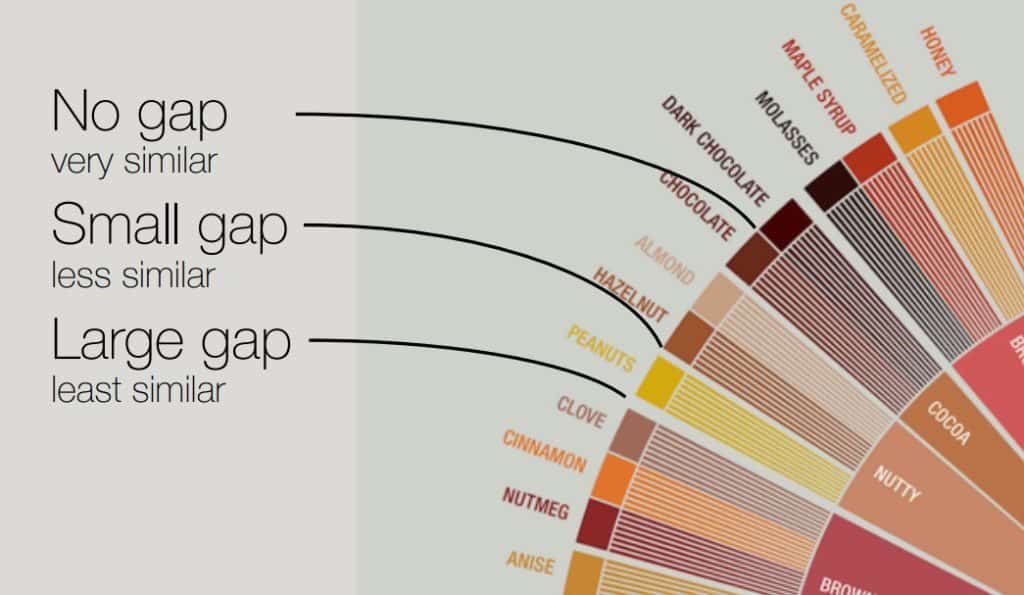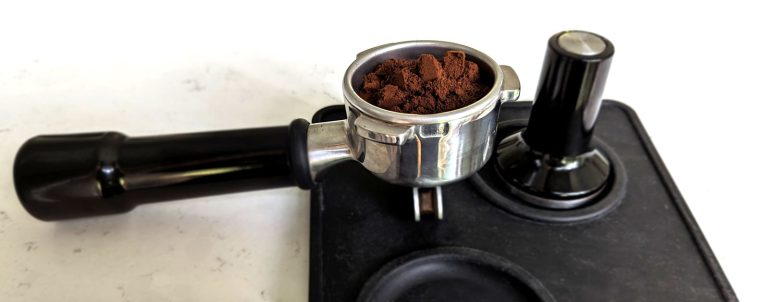Unlock the Secrets of the Coffee Flavor Wheel in 5 Steps
Did you ever marvel at the tantalizing aromas and bold flavors that you find in a freshly brewed cup of coffee?
Once you start diving into the world of brewing and that delicate taste in your coffee cup, you’ll likely come across Coffee Taster’s Flavor Wheel. And I won’t deny that looking at it as a complete newbie can be quite overwhelming.
But there’s no need to worry!
I’ve laid down 5 easy steps to help you gain more insight into coffee’s flavors and aromas through this magical wheel.
What is the SCAA Coffee Flavor Wheel?
The Flavor Wheel offers a comprehensive overview of the potential flavors that can be found in coffee – allowing us to explore each sensory component along with its best corresponding taste descriptors. The wheel showcases flavor notes ranging from sweet citrus tones to bitter woody aromas through a color-coded graphical representation.
By becoming familiar with these nuances on the wheel, we are better equipped to:
- decide what types of beans suit our taste best,
- taste coffee and evaluate the results during coffee cupping sessions, at home, or at a café.
Since it was first released, the Specialty Coffee Association of America (SCAA or SCA) Coffee Taster’s Flavor Wheel has been an essential resource for professional coffee tasters and home baristas alike.
Download the Coffee Flavor Wheel Chart pdf here.

Looking at the higher-resolution image of the wheel, you’ll also notice 3 sizes of gaps between each aroma.
These indicate how close or far each is from the other.

More Than a Sensory Analysis Tool
As the interest in the intricacies and flavors of coffee started to rise, stakeholders of the SCA also realized that the wheel needed to be improved even more. This is when they began a partnership with World Coffee Research (WCR) to create the Sensory Lexicon.
This fundamentally revolutionized how coffees are evaluated and described by providing a standardized, common language that can be used globally. The wheel and lexicon identify 110 flavor, aroma, and taste characteristics present in coffee, which allows tasters and coffee buyers insight into the flavors they want out of their cup of joe.
So instead of tasting your coffee and guessing the flavors, you can now test your senses with an actual standard for comparison. This is all thanks to years of research, collaboration, and shared love for coffee.

How to Use the Coffee Tasting Wheel in 5 Steps
At first glance, the whole diagram might look like a mysterious puzzle. You might ask yourself if you’ll actually catch a taste of Almond or Whiskey based on the wheel.
On the first try, you might not catch any taste characteristics at all. But that’s ok!
Let’s walk through using this tool effectively, step by step.
Before anything else, though, remember that tasting your coffee should be a multisensory experience when using the flavor wheel. The SCA defines flavor as “a combination of taste and smell.”
Take note of this as you go through the steps outlined in this guide:
Step 1: Familiarize Yourself with the Coffee Taster Flavor Wheel
The Coffee Taster Flavor Wheel represents a kaleidoscope of the tastes you can experience with your coffee. Again, it can be intimidating at first, but you don’t have to memorize the colors on the wheel and every single word associated with the taste.
You can print a copy and stick it on your wall or maybe use it as your desktop background. When you see or study it often, you’ll become familiar with it naturally.
While the most obvious aspect of the wheel is its colorfulness, pay attention to the structure as well. You will observe that the inner circle includes general categories of basic tastes and the outer areas get more and more specific.

Step 2: Prepare Your Cup of Coffee
It’s always best to put theory to practice immediately.
After studying the main categories and specific flavor attributes, prep yourself with a cup of your favorite coffee.
After all, thinking about coffee will not get you any closer to smelling and tasting it according to the flavor wheel 🙂
Step 3: Smell and Taste the Coffee Properly Through All Stages
Without looking at the wheel now, concentrate on the aroma, color, and eventual taste of your coffee:
- Notice the aroma of your freshly ground coffee beans.
- Pay attention to the scent and color as the water steeps the coffee (if you’re using a brewing method that makes this possible).
- Pay special attention to the colors and flow as you pour it into your cup.
- Before taking your first sip, smell your coffee.
- As you take a sip and swallow, exhale through your nose.
How does the coffee taste on your tongue? What taste lingers as you swallow?
It’s okay if you don’t look at the flavor wheel yet while all of this is happening.
Zone in on the smell and taste of coffee, so you can remember it more vividly. It’s almost like meditation.
Step 4: Start at the Center of the Wheel
The whole design follows three circles from the inside out:
- Start from the center of the coffee wheel, as this is where you’ll find the more broad flavor descriptors.
- Work your way outwards as you identify the main aromas.
- You may not be able to describe the exact taste in the beginning, but a general flavor description through the innermost part of the wheel is a good start.
- Depending on your palate, you can stop at any circle.
This is the most intriguing function of the flavor circle: you can savor different tastes. From broad flavors, you can eventually point out more complex tastes.
Step 5: Hit Up The Sensory Lexicon (Pro Level)
Now, if you’re aiming to be an expert coffee taster or simply know professional tasters, using the coffee taster’s flavor circle would definitely be a valuable resource.
That being said, while it’s going to be used by coffee professionals, many of us are not trained in the finer details. This is where the World Coffee Research Sensory Lexicon comes in.
You’ve tasted roasted coffee, and can identify the main taste categories. That’s great!
But would you ever know how “hay-like” or “phenolic” tastes?
The lexicon defines each of these attributes, complete with an intensity scale, flavor references, and how to replicate it to teach your nose the aroma.
If you’re simply an everyday coffee drinker, you won’t need to look at the lexicon at all. But if you’re interested in understanding the complex flavors that can be found in coffee, you should definitely hit up the Sensory Lexicon.
Now Brew Some Coffee!
Who knew so much thought went behind defining each flavor within your favorite cup?
By understanding the Coffee Flavor Wheel through these five steps you are now poised for an even more enjoyable experience not only with tasting your coffee but also in brewing and finding the beans that work best for you.
Get yourself a copy of one of the most iconic resources in the coffee industry and let me know how these steps elevated your experience.









Your article piqued my curiosity, Tom. I’ve seen the flavor wheel before but never really knew what to make of it. Could you clarify if the wheel can be used with any kind of coffee, or is it best suited for certain types of beans or brew methods?
Well, it is intended specifically for cupping, but of course, you can use it for any type of coffee beverage. Obviously you won’t get much origin taste with a caramel latte at startbucks though 😉
Just finished a tasting session using the steps provided, and wow—what a difference. I actually noticed hints of citrus I’ve never picked up before. Curious though—does anyone else find the woodyaromas a bit elusive, or is it just my novice taste buds?
I’ve always just picked coffee based on the roast level, thinking that was all that mattered. After reading this article, I feel like unlocking some grand secret to better coffee. Tom, your step-by-step guide on the flavor wheel is a true eye-opener. I’m thankful I stumbled upon your article and can’t wait to put this knowledge to use with every cup. Hopefully, I’ll refine my palate to truly appreciate the more subtle notes in my cup.
This article is a treasure trove for coffee lovers. I had heard about the Coffee Flavor Wheel but never knew how to use it. Your explanation of the gaps on the wheel indicating the relationship between aromas is something I hadn’t caught on to before. Really excited to download the chart and try it out with my next brew. Thank you for sharing such a helpful tool, Tom.
The part about the sensory lexicon was particularly enlightening. As someone who’s participated in a few cupping sessions, I can attest that having a shared language is vital. It’s interesting to see how the SCA’s efforts in standardizing the process can enhance consistency and communication among enthusiasts and professionals alike.